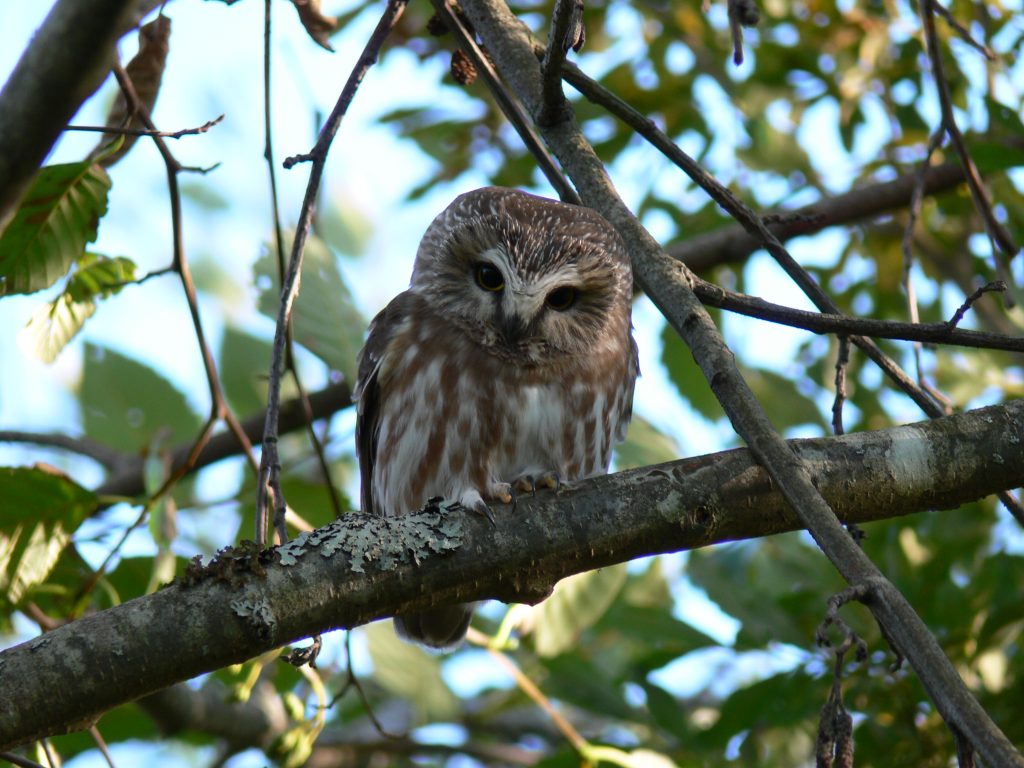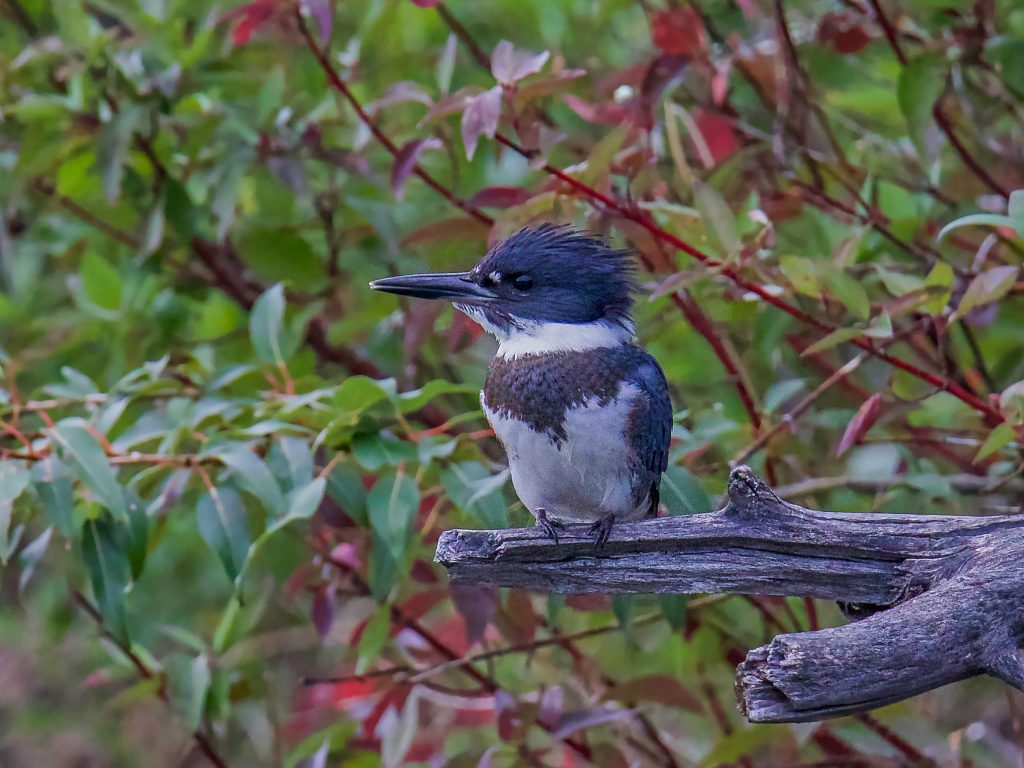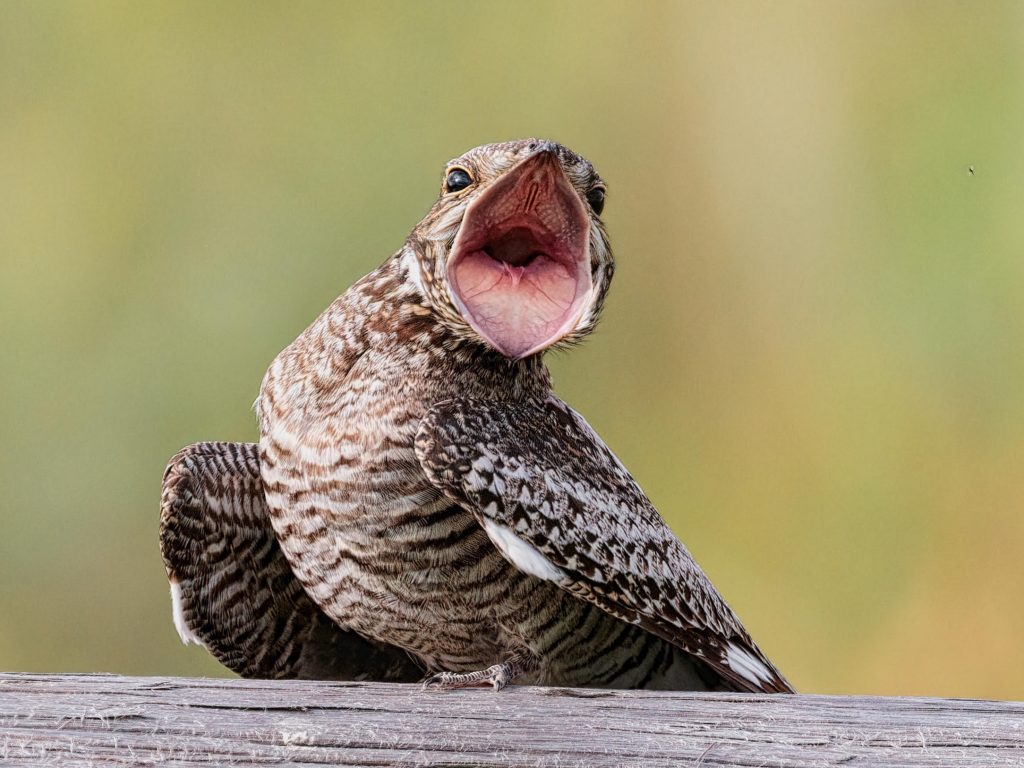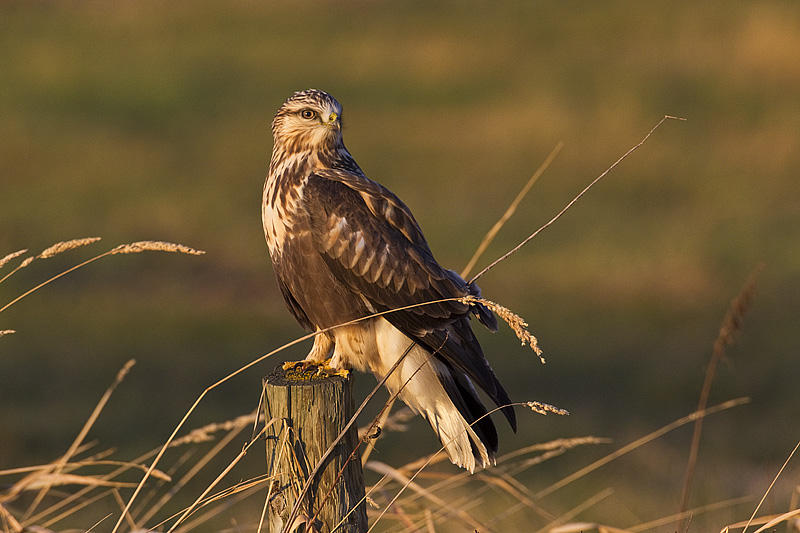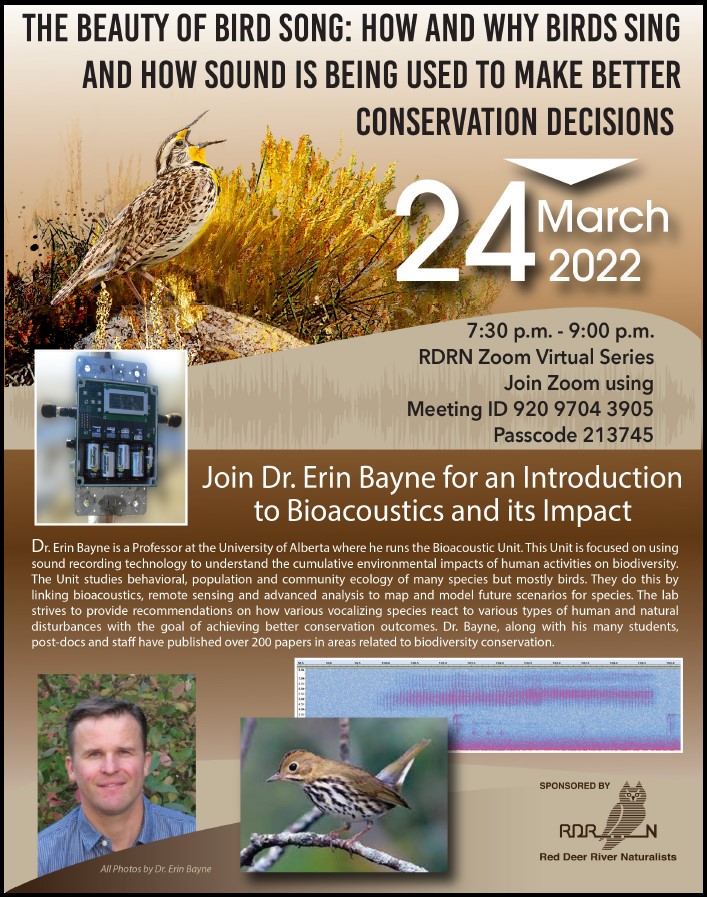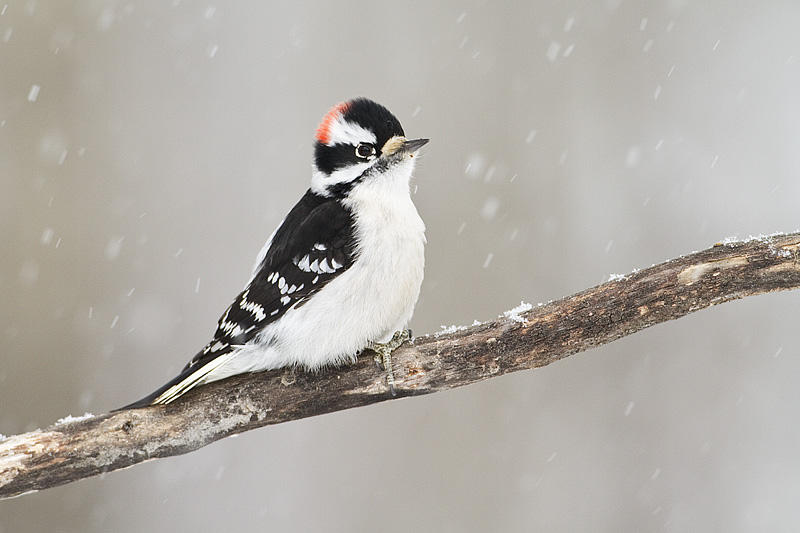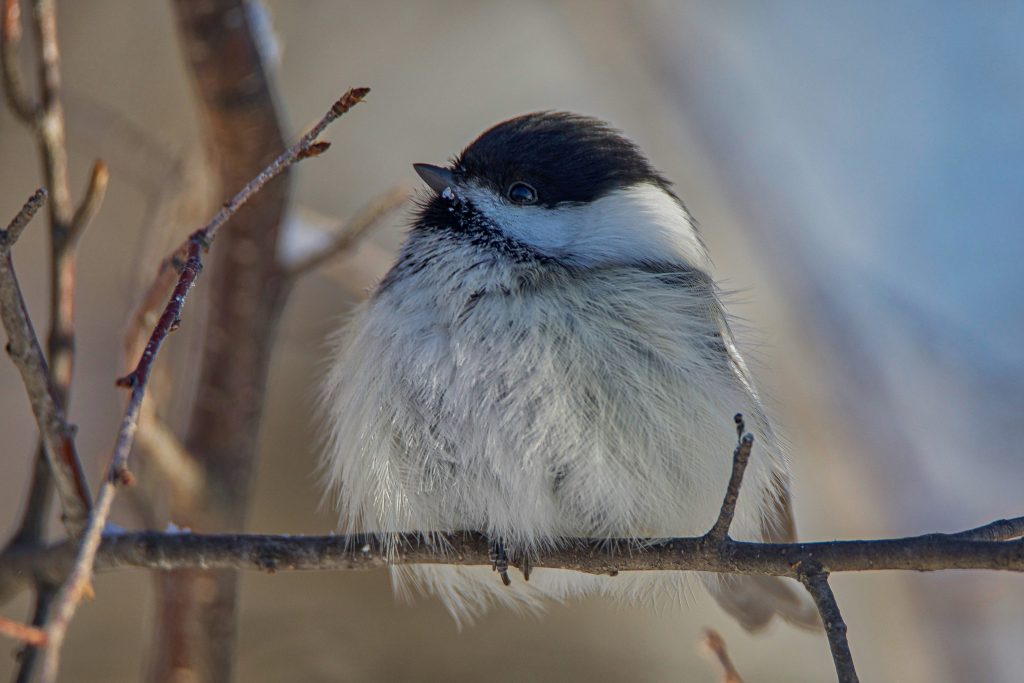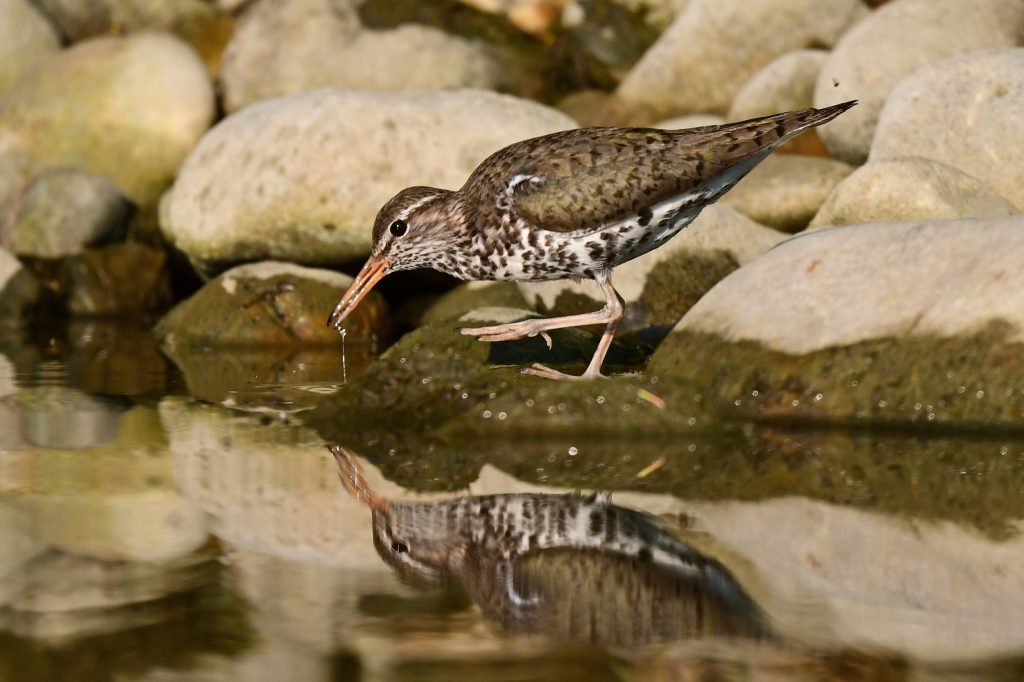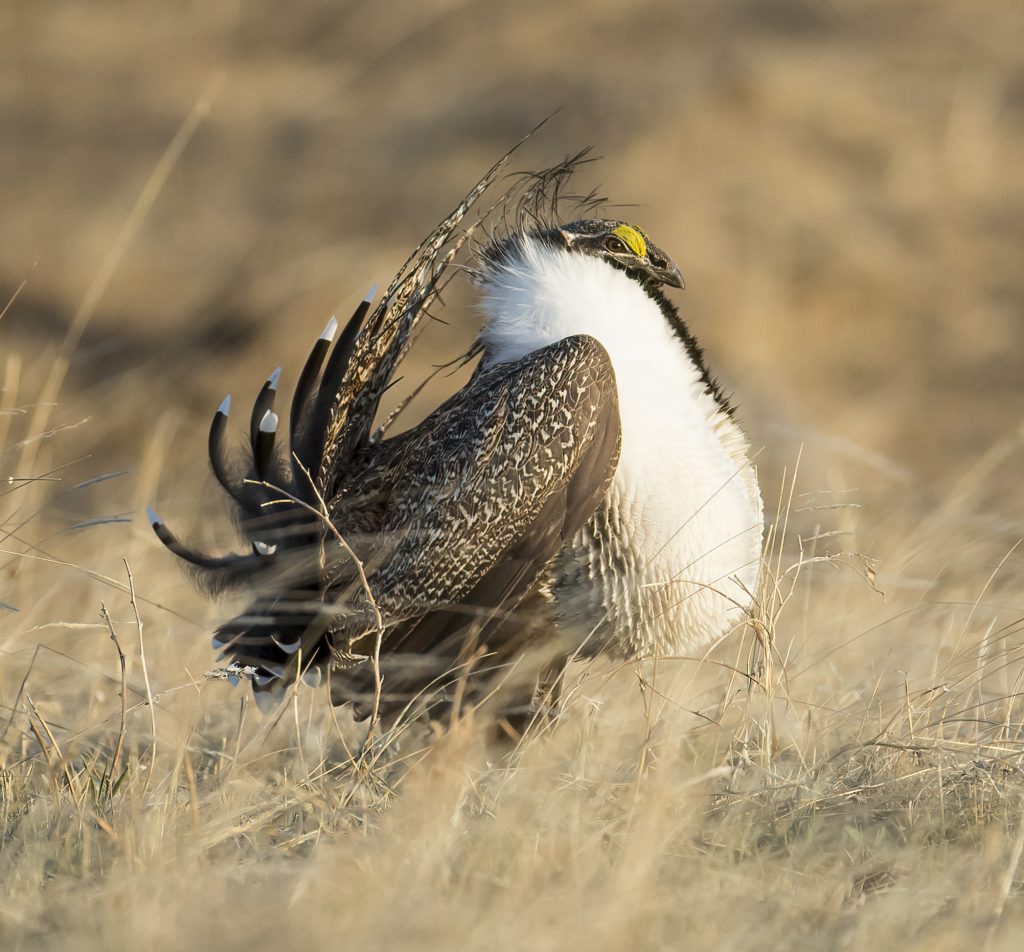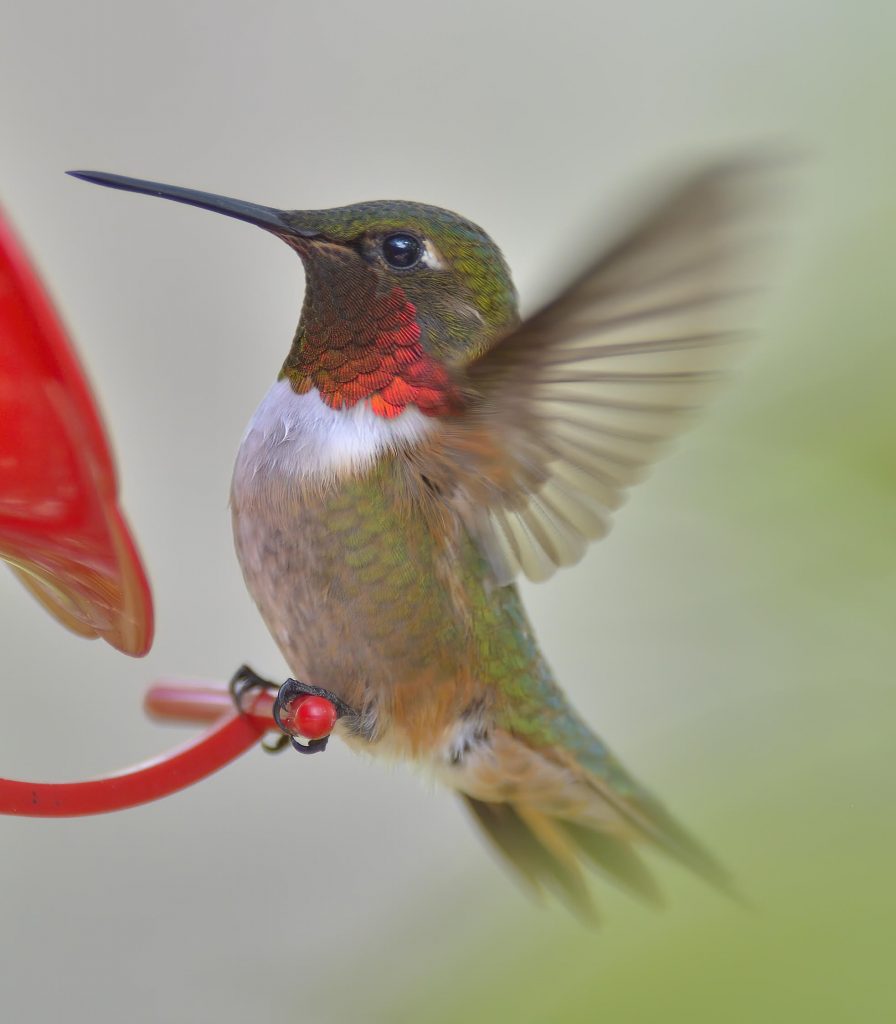Birds
This page features articles and video presentations about Alberta's birds. See our Featured Species page for information on other species.
Saw-whet Owls: residents, migrants or vagrants; an avian enigma
Recorded Presentation
Speaker: THE BEAVERHILL BIRD OBSERVATORY
Host: Edmonton Nature Club
Kingfishers: Keeping a Watchful Eye on the Water
BY MARGOT HERVIEUX
If you spend time along rivers or small lakes this summer, you may be lucky enough to spot a kingfisher. There are many kinds of kingfishers in other parts of the world but in Canada we only have one species: the belted kingfisher.
Read MoreJaw-Dropping Bird – The Common Nighthawk
BY DORIS MAY & STEPH WEIZENBACH
Feel the Noise
BOOM! The first time I heard this loud, unnerving sound, it reverberated through the ravine where my prairie home lies nestled along a meandering creek. The sound was ominous, like a sound effect you might expect in a tense scene from a Jurassic Park movie.
Pesticide threats to birds and biodiversity in the prairies
Recorded Presentation
Speaker: CHRISTY MORRISSEY
Host: Crooked Creek Conservancy Society of Athabasca
The Beauty of a Bird Song
Recorded Presentation
Speaker: ERIN BAYNE
Host: Red Deer River Naturalists
Watching Winter Woodpeckers
Black-capped chickadees are certainly our most common winter feeder visitors, but downy woodpeckers are often a close second. Both downies and their larger cousins, hairy woodpeckers, are year-round residents in our winter forests.
Read MoreWeathering Winter with Chickadees
Alberta is home to four chickadee species. Black-capped chickadees are the most common and widespread. They are found across the entire province and are not only the easiest bird species to attract to backyard bird feeders, but also hold the distinction of being Canada’s most common feeder species. Their small size, cheery countenance, and remarkable hardiness endear them to their human neighbours.
Read MoreSpotting Spotted Sandpipers
BY MYRNA PEARMAN
As I approached the west shoreline, I noticed a pair of spotted sandpipers bobbing along a small stretch of beach. As I paddled closer, two little fluffballs suddenly materialized!
Read MoreDancing Without a Stage – The State of the Greater Sage-Grouse
BY TIMOTHY SHAPKA
As of 2020, the Alberta population of greater sage-grouse was estimated to be 72 individuals — down from the thousands that were present when we started keeping track in 1968. Timothy Shapka reviews the causes of the decline and what is being done to recover the species.
Read MoreRare Alberta Birds Get Close Scrutiny
The Alberta Bird Record Committee (ABRC) is the body responsible for evaluating records of rare birds in the province. It periodically publishes the results of its deliberations, and its newest report, the thirteenth in the series, is now available. The report documents the Committee’s decisions on almost 90 records of bird rarities that have been recorded in the province over a span of about six years.
Read More
